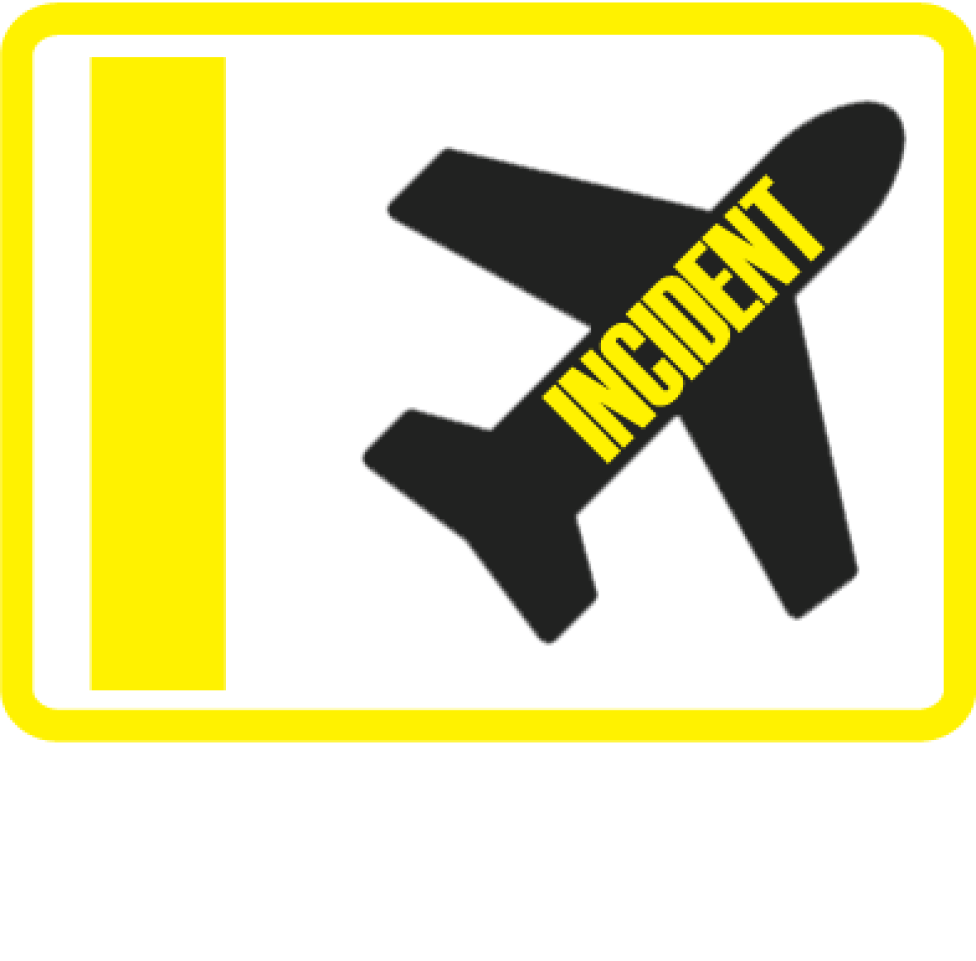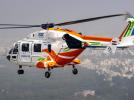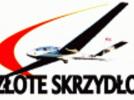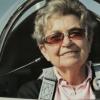Air Burkina MD83 at Paris on Jan 12th 2011, landed below final reserve
On Aug 28th 2014 the French BEA released their final report in French concluding the probable causes of the serious incident were:
- inadequate flight preparation which resulted in a decision to perform the ferry flight with the gear extended without sufficient information to compute the amount of fuel needed for the flight
- the termination of refueling contracts prompting the crew to return to Paris Orly rather than divert for refuelling
- a crew resource management gradient which prevented identification of:
-- malfunction of the set of VOR/ILS1 during the first approach
-- proper function of the ILS on the set of VOR/ILS2
-- different deviations from flight trajectory
The BEA reported that the MD-83 registration XT-ABF had suffered a hydraulic failure during the previous flight. The aircraft therefore was being ferried to Olbia (Italy) with the landing gear remaining extended throughout the flight.
Without information necessary to compute the necessary fuel to conduct the flight the crew increased the fuel quantity needed by 5% resulting in 7040kg/15,500 lbs total fuel computed for the flight.
The aircraft departed with the captain (54, ATPL, 8,576 hours total, 1,770 hours on type) being pilot flying and the first officer (47, ATPL, 3,370 hours total, 1,935 hours on type) being pilot monitoring. Upon reaching the first navigation waypoint LAMUT enroute the crew determined that the fuel burn was higher than anticipated. Upon reaching the second navigation waypoint LAKOB the trend was confirmed and the crew determined fuel was insufficient to reach the destination. About 23 minutes into the flight the crew therefore decided to return to Paris Orly.
About 50 minutes after departure the aircraft had descended to 4000 feet MSL and was being vectored for an ILS approach to runway 26. The approach controller issued a heading of 290 degrees to have the crew intercept the localizer runway 26. The crew used the autopilot in heading select and vertical speed modes to steer the aircraft onto the localizer. About 73 seconds after the instruction heading 290 the controller noticed that the aircraft was still tracking parallel to the localizer and instructed the crew to turn right 20 degrees, the crew acknowledged and changed the course. Another 49 seconds later the controller noticed the aircraft had descended showing 1100 feet MSL (600 feet AGL) on his screen and instructed the crew to return to 2000 feet, his transmission was overlaid with the activation of the minimum safe altitude warning on his radar screen. The crew acknowledged and climbed the aircraft.
The controller noticed that the aircraft went through the localizer without turning onto the extended center line and queried the crew twice whether they were receiving the ILS. The crew in response requested radar guidance, the controller commanded a heading of 240 degrees to return the aircraft onto the extended centerline and instructed the crew to descend to 2000 feet as the aircraft had climbed to 3350 feet MSL in the meantime.
On a third query by the controller whether the ILS was being received by the aircraft the crew finally replied "No". The controller instructed the crew to turn onto a heading of 180 degrees for a new approach. The controller queried whether the crew was able to perform a RNAV approach, reply was negative. The controller checked with the crew whether they were aware of the MDA for the VOR/DME approach was 900 feet with a current cloud ceiling at 300 feet, the crew acknowledged they were aware, declared minimum fuel and stated they needed to perform the approach. The controller queries fuel remaining, the crew indicated they had less than 40 minutes remaining. The controller queries again whether the crew would be able to perform a VOR/DME approach to runway 26, the crew affirmed and stated "but we need to be quick". While being vectored onto the approach the crew indicated they had less than 30 minutes of fuel remaining and declined a controller's offer to divert to the military airfield of Villacoublay with possibilities to offer more precise guidance.
The controller issued a vector of 280 degrees and cleared the aircraft for the VOR/DME approach to runway 26. At that point the crew determined that the whole left side of the cockpit (captain's side) did not have any valid VOR indications, while the right hand side (first officer's side) did have apparently valid indications. The captain handed controls to the first officer. The first officer continues the approach using autopilot modes heading select and vertical speed again and intercepts the localizer about 12nm before the runway threshold, about 2 minutes later the first officer began the descent, but 53 seconds after the begin of descent the minimum safe altitude warning activates again at the controller's desk, the crew reported about 3nm to touch down. The controller queries the altitude again and hands the crew off to tower.
Tower cleared the aircraft to land on runway 26. The crew continued the descent to below MDA while tracking the VOR radial until the captain announced he had visual contact with the runway to the left. Tower controller observing the approach and landing compromised instructed the crew to go around twice without a response.
The aircraft reached a bank angle of 27 degrees when the captain stated they would not be able to land from their position but is interrupted by the first officer stating firmly twice that they MUST land. The captain agreed.
While visually maneouvering to establish on the runway centerline the GPWS issued "Sink Rate" twice at 230 feet AGL, while crossing the runway threshold the GPWS sounded "Bank Angle" several times as the aircraft rolled right beyond 33 degrees of bank angle at 95 feet AGL. Descending through 40 feet the aircraft rolled left to about 13 degrees of bank angle to align with the runway, the GPWS sounded "30 feet". At 8 feet AGL the aircraft rolled right to 8 degrees of bank angle, the aircraft touched down about half way down the runway 26 at 132 KIAS and stopped a few meters short of the runway end as result of "energetic braking".
The BEA reported 1500 kg of fuel remained on board, a go around and new approach would have needed 1000kg of fuel.
The BEA reported that on the previous flight XT-ABF had suffered a hydraulic leak which required the alternate gear extension. The gear doors remained open during landing and received damage requiring repairs. Due to lack of parts and equipment in Paris the repairs could not be made and the aircraft was unable to return to service and remained in Paris over night.
The return flight the previous day had been the last to Paris Orly planned by Air Burkina, the contracts for refueling the aircraft with a fuel supply company at Paris Orly had ended that day. The airline was thus in negotiations with another company to get the aircraft refueled for the ferry flight, that was to follow temporary repairs to get the aircraft to a maintenance facility at Olbia where final repairs would commence.
The aircraft featured a performance management system (PMS) which however was limited to informal purposes only, the manuals stating that the accuracy of the system had not been demonstrated. In addition the PMS was not able to process abnormal configurations.
The VOR is located about 500 meters north of runway 26, the inbound radial 258 is such not aligned with the runway center line. The missed approach point is 2.7nm before the runway threshold, the minimum descent altitude is 900 feet MSL (600 feet AGL) requiring an RVR of 2400 meters (ILS: DH 490 feet MSL (200 feet AGL), 550 meters RVR).
Villacoublay military aerodrome is located about 8nm north of Paris Orly and features a PAR (precision approach radar) enabling the controller to provide lateral and vertical guidance for the approach based on a precision radar.
The BEA stated that Boeing (who took over McDonnell Douglas) provides documentation for planning flights with the gear extended on request as well as during initial delivery of the aircraft. According to that documentation the aircraft would require 9400 kg (including reserves) of fuel for the flight from Orly to Olbia instead of 6800kg with the gear retracted (and cruising at FL310).
The BEA reported that a post flight examination revealed no malfunction of the ILS or VOR systems. However, the examination and investigation could not determine whether a malfunction existed at the time of the occurrence. The flight data recorder showed the ILS was tuned but all indications remained static confirming the ILS/VOR system did not indicate at the time of the occurrence.
The BEA analysed that the crew departed without time pressure and in confidence that they would be able to return should it turn out the fuel was insufficient to reach Olbia. The airline anticipated delays in getting the documentations from Boeing hence the crew decided to give the ferry flight and go. However, when the crew found out that the fuel was insufficient indeed, the crew feared to be unable to refuel at Marseille, the aerodrome closest to their present position then, after the fuel supply contracts had ended and decided to return to Paris.
While intercepting the localizer the crew turned left without having intercepted the localizer and tracked parallel to the extended center line of the runway about 2nm to the left of it. The course deflection indicator showed +1 dot, and the glideslope -1 dot, which may have convinced the captain to descend the aircraft even though in violation of rules requiring to be established on the localizer before descending. After approach had instructed them to climb back to 2000 feet and turn onto the localizer crew cooperation fell apart and there was no further cooperation between the crew with the first officer more and more doing his own thing, the captain (French) talking in French not being understood by the first officer (Italian).
The crew declined the offer by air traffic control to divert to the military airfield for not understand what he actually meant with the "more precise guidance" and thus did not get aware of the PAR approach facility available there, both pilots were familiar with and in hindsight would have accepted had they recognized the possibility.
The BEA further analysed that the transfer of control from captain to first officer was not made formally but gradually by the first officer taking more and more control.
The first officer decided to ignore the instruction to go around because of low fuel, he felt they were committed to land on this approach.
The final approach and landing trajectory (Graphics: BEA):
Trajectory of VOR/DME approach (Graphics: BEA):
Trajectory of ILS approach (Graphics: BEA):
Trajectory of flight (Graphics: BEA):
VOR/DME runway 26 Approach Chart (Graphics: BEA):
http://avherald.com/h?article=4369190c/0000














Komentarze